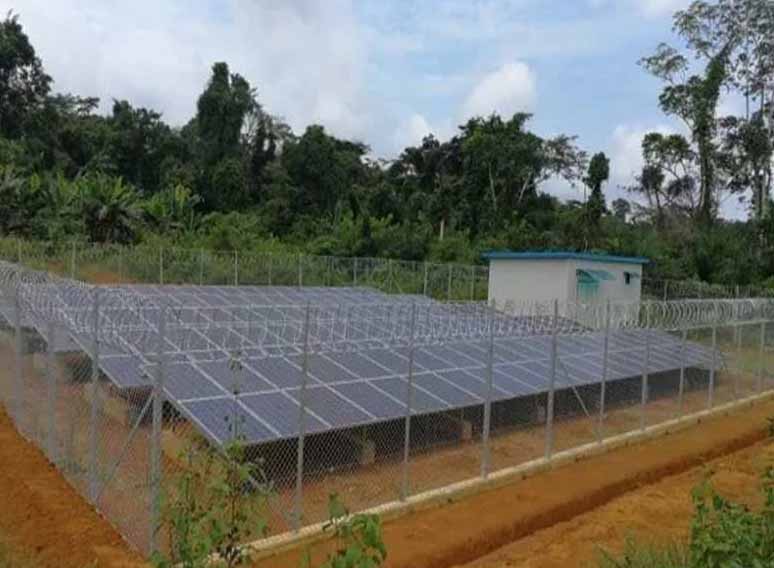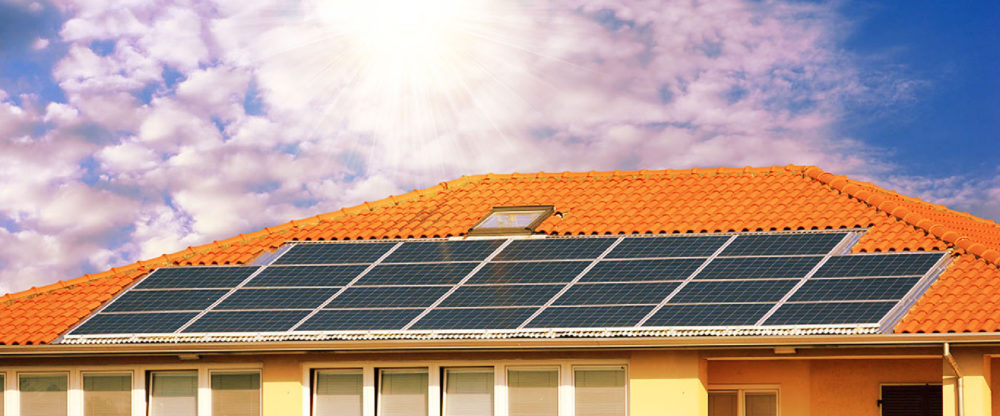Micro-grid solar solution promotes increased electrification

https://www.esi-africa.com/industry-sectors/business-and-markets/micro-grid-solar-solution-promotes-increased-electrification/
How can the micro-grid solar solution realise electrification in regions without power supply?
By Long Sheng, Huawei Inverter Marketing Support Department
The electrification revolution, which began in the 1860s, completely changed the way people live and promoted social development. But according to the World Bank’s State of Electricity Access Report there are 1.06 billion powerless people around the world. They still live in the dark and do not enjoy the benefits of electrification. 87% live in remote rural areas and in island nations far from power grids. Unfortunately, the cost to extend the power grid to reach them is too high.
But with the development of photovoltaic (PV) and lithium-ion battery technologies, micro grids (PV + energy storage) can be used to achieve rapid electrification in remote areas. In developing countries such as Guinea, Kenya and Cameroon micro-grid solar technology is also an important development direction for rural grid electrification.
Micro-grid composition
A micro-grid is a small power distribution system composed of a distributed power supply, an energy storage device, an energy conversion device, a load, a monitoring device and a protection device. The solar energy solution uses solar energy as a distributed power supply, energy storage batteries as energy storage devices and micro-grid inverters as energy conversion devices to ensure the power consumption of residents.
Currently, micro-girds have many obstacles, for example, micro sites are mainly distributed in remote rural areas. Onsite construction and O&M personnel often lack the technical skills to build and support these networks. Therefore, the market requires a solution that is easy to deploy, maintain and expand, thus allowing local staff to be involved in the construction and O&M.
The micro-grid product solution is composed of distributed inverters with small capacity. Take a 60kW site as an example. Some vendors require 10 inverters and 120 types of cables, with cable connections that are extremely complex. Another obstacle to micro-gird development is the maintenance cost. In the low-end churn scenario, no intelligent O&M management system is available. The fault location is slow and the O&M workload is high. The O&M personnel have high requirements on skills.
More importantly, solar energy provides long-term power supply protection for local residents. However, most lead-acid batteries have a lifespan of less than three years and the attenuation rate and the number of cycles are too short. Therefore, the power consumption security of rural and underserved people is challenged.
Project in Cameroon
In 2013, Huawei cooperated with the Ministry of Water Resources and Energy of Cameroon to deploy the Huawei PowerCube5000 micro-grid solution to convert solar energy into electric energy. The project will cover 58 states of 10 major regions across the country and a total of 1,000 sites will be delivered with a capacity of 70MW. Currently, the phase-1 project has been finished and has covered 166 villages (11.2MW), benefiting 120,000 people in Cameroon. The annual energy yield is 17 million degrees, improving the access rate of 2% rural grids. The second phase is under construction, covering 184 villages and can bringing light to 120,000 people too.

Huawei has cooperated with Cameroon’s Water Resources and Energy Department to cover 166 villages in the first phase of the solar power station.
The Huawei micro-grid solar power station allows students from all over the world to use computer science to access knowledge and communication systems.
Micro-grid Solar-Powered plants allow health professionals to use refrigerators to store vaccines.

As a clean energy source, solar energy is not only environmentally friendly, but also meets the many power requirements of residents including TVs, fans and refrigerators, thereby comprehensively improving local living conditions.
The implementation of these projects provides end-to-end power supply network construction services and related training for local residents, creating more 1,000+ jobs and driving the development of local education, medical communications and manufacturing.
Huawei all-in-one design
With its technical strength in the PV inverter field, long-term experience in the energy storage field and continuous technological innovation, Huawei launched the micro-grid solar solution. The solution can be configured with the energy storage system to support diesel generator access, with the aim to provide a reliable power supply for areas without main supply. The all-in-one design simplifies deployment and requires low initial investment, solves the problem of limited power supplies in remote rural areas and helps local governments quickly achieve electrification targets.
The battery energy storage technology can be used for a maximum of 4,500 times and can run stably for more than 10 years. The solution also supports remote site monitoring, efficient O&M and helps resolve O&M problems by using the carrier communication network platform. In addition, the solution adopts Huawei offline power charging system and pre-paid mode to help the operations department solve the problem of electricity fee recovery.
Huawei cooperated with the Ministry of Water Resources and Energy of Cameroon to implement this project. This project has achieved international notoriety and was nominated for the “Innovation Award” at the Global Smart City Expo in 2017.
In the electric power industry, Huawei provides a one-stop ICT solution and puts forward “New ICT, Bits Drive Watts”. It is committed to bringing digital technologies into every home and each electric power enterprise and becoming the best partner in the digital transformation of the electric power industry.
To date, Huawei’s fully-connected grid solution have served 13 of the world’s Top 20 power companies and have been widely used in 73 countries worldwide, serving more than 190 electric power customers. Some examples include: The State Grid of China, Germany’ s E.ON and Italian National Power Company ENEL.


